Potřebujeme váš souhlas k využití jednotlivých dat, aby se vám mimo jiné mohly ukazovat informace týkající se vašich zájmů. Souhlas udělíte kliknutím na tlačítko „OK“.
ASTM F2171-02(2009)
Standard Guide for Defining the Performance of First Aid Providers in Occupational Settings (Withdrawn 2018)
Automaticky přeložený název:
Standardní Guide pro definování výkonnosti poskytovatelů první pomoci v nastavení z povolání
NORMA vydána dne 1.3.2009
Informace o normě:
Označení normy: ASTM F2171-02(2009)
Poznámka: NEPLATNÁ
Datum vydání normy: 1.3.2009
Kód zboží: NS-53073
Počet stran: 6
Přibližná hmotnost: 18 g (0.04 liber)
Země: Americká technická norma
Kategorie: Technické normy ASTM
Kategorie - podobné normy:
Anotace textu normy ASTM F2171-02(2009) :
Keywords:
buddy care, bystander care, emergency medical services (EMS), first aid provider, illness, injury, workplace injury, Buddy care, Bystander care, Emergency medical services (EMS), First aid, Illness, Injury, Performance--medical materials/applications, Workplace injury, ICS Number Code 11.160 (First aid)
Doplňující informace
| Significance and Use | ||
|
Currently, no one body of work exists that contains a comprehensive standard for defining the performance standards for personnel that are initial responders to illness and injury in the occupational setting. Whereby several corporate, state, and national organizations have developed training curricula, no independent consensus standard establishes a national minimum requirement. This guide allows the determination of course equivalency and provides a mechanism to assess regulatory compliance. This guide is intended to be consistent with the National EMS Education and Practice Blueprint, thus the first aid provider in an occupational setting in this guide is defined as in 3.1.2. This individual uses a limited amount of equipment to perform initial assessment and intervention while awaiting arrival of EMS. The goal of this guide is to provide program developers, institutions teaching first aid courses, consumers of these courses, and regulatory agency personnel who review or approve courses, or both, the essential elements of what is considered safe, helpful, and effective first aid training. The focus and training is similar and, in some cases, largely identical to those standards developed by the National Guidelines for First Aid Training in Occupational Settings (NGFATOS) developed by the NGFATOS consensus group referenced in Section 2. |
||
| 1. Scope | ||
|
1.1 This guide covers the minimum requirements needed to train a student to assess and manage illness and injury prior to: (1) notification, arrival, or treatment by traditional EMS agencies, or combination thereof, or (2) management of a minor emergency medical incident instead of an EMS response. 1.2 This guide also recommends minimum instructor qualifications, program logistics, and medical oversight considerations. 1.3 This guide does not delineate a new level of formalized education for prehospital medical provision. This guide does not replace or decrease the need for appropriate agencies to seek state or national licensure or certification as an First Responder or Emergency Medical Technician (Basic, Intermediate, or Paramedic). 1.4 Content and skills appropriate to the first aid provider's scope of care and specific to the hazards or risks of particular industries and occupations may be added by program developers, instructors, and employers. These changes should be consistent with the intent and design of this guide. |
||
| 2. Referenced Documents | ||
|
Podobné normy:
Historická
1.2.2007
Historická
1.6.2014
Historická
1.3.2009
Historická
1.2.2007
Historická
1.3.2009
Historická
1.7.2012


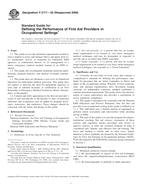
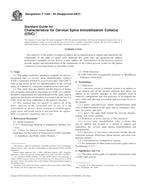 ASTM F1559-94(2007)..
ASTM F1559-94(2007)..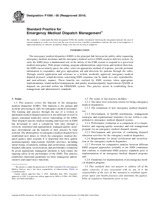 ASTM F1560-00(2014)..
ASTM F1560-00(2014)..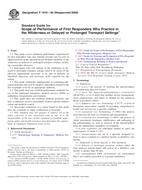 ASTM F1616-95(2009)..
ASTM F1616-95(2009)..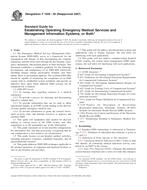 ASTM F1629-95(2007)..
ASTM F1629-95(2007).. ASTM F1651-95(2009)..
ASTM F1651-95(2009)..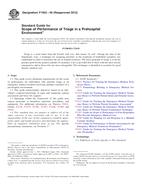 ASTM F1653-95(2012)..
ASTM F1653-95(2012)..
 Cookies
Cookies
